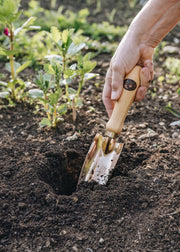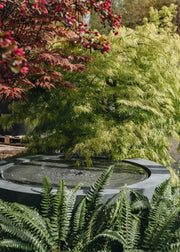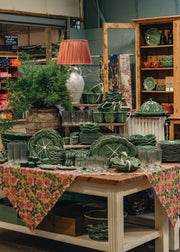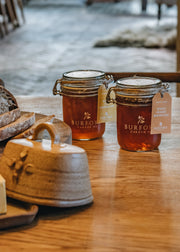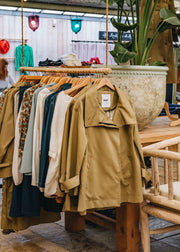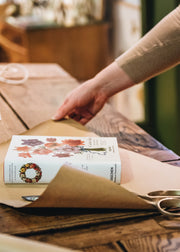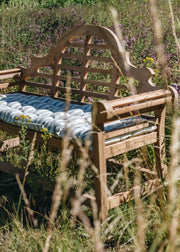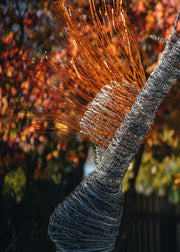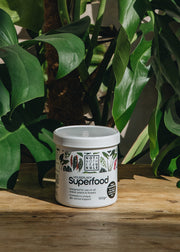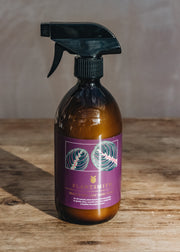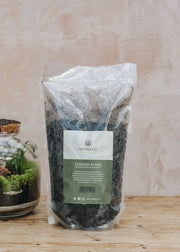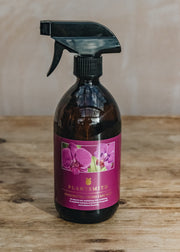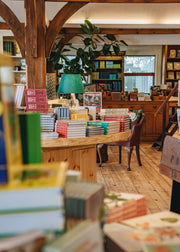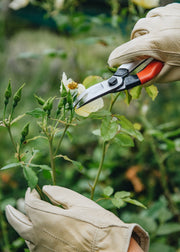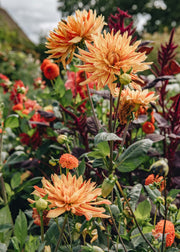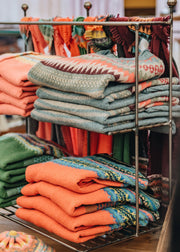Q&A with Tony Le-Britton
In advance of Tony's visit to sign copies of his brand new book 'Not Another Jungle' and host an in store 'Plant Surgery', we caught up to discuss his top tips to keep houseplants in perfect condition...

There are some very tough, resilient plants available but even they will only flourish in conditions that suit their needs. The most important thing is to find a plant that suits the amount of light you have available where you’d like to put it. From there you can find the toughest plants for that particular spot.
If you have a lot of direct sunlight most cacti and succulents are very reliable. If you have direct light in the early morning or late afternoon (west or east facing) then Tradescantia, Monstera, Alocasia and Begonia will grow happily and if you receive no direct light but still have bright ambient light then Aspidistra, Epipremnum, Pilea and Aglaonema will be happy here. Give it enough light and you’ll already be most of the way to growing happy houseplants.

Alocasia Jacklyn

Monstera Deliciosa
Brown leaves can mean a lot of different things and sometimes its completely natural and just part of a leafs natural lifespan. If your plant is producing new, healthy leaves then it’s likely nothing to worry about. Some plants like Calathea and Maranta are difficult to keep without the odd brown edge so you just need to accept that’s part of their overall look and that plants are living things and not meant to be perfect.
Other times browning leaves can be a sign of various things. Over or under watering, sun burn, pests or many other things. If you have a plant with brown leaves that’s looking under the weather just work through a checklist to identify the problem.
I always start by identifying if its getting enough light. If it doesn’t have a clear view of the sky its likely not getting enough light to use up the water you’re giving it and that results in the plant sitting wet for too long. If your soil is staying damp for more than two weeks its likely overwatered. If the soil is bone dry, coming away at the sides of the pot the browning could be from under watering. Check the top and bottom of leaves for signs of pests too. Sometimes people growing houseplants forget that they can also suffer from pests but they are easy to control with a regular shower down and wipe over with a damp microfibre cloth.

I water the majority of my plants from above. This has the benefit of flushing out any build up of excess nutrients and salts and helps minimise overwatering. Many people think that when you bottom water the plants are absorbing what water they require but it is in fact the substrate absorbing the water. Leaving the substrate sitting in water while bottom watering can cause the substrate to become oversaturated so if you struggle with overwatering your plants I’d avoid it. The only time I’ll bottom water is when the soil has become so dry that it is hydrophobic (repels water) and allowing it to sit in the water allows the substrate to rehydrate.

I recommend fertilising all year round with every other watering. Many suggest to stop fertilising during winter but like us, plants require nutrients even if they aren’t growing as they are still functioning to produce energy. By fertilising every other watering you are feeding in line with how much water your plant is using and the gap between allows you to flush excess nutrients and salt build up out of the pot with clean water.
Tony's Houseplant Superfood creates the perfect bio-chemistry in your pot for stronger and healthier plants.
Myth: Don’t give plants tap water
Most days I will get asked what type of water I use for my plants, and people look surprised when I say tap water. Their response is usually ‘doesn’t the chlorine damage them?’ It doesn’t, mostly because plants can tolerate much higher levels of chlorine than the 5 PPM (parts per million) set out by the World Health Organization for drinking water, and in fact plants need a little chlorine, as it is essential for the chemical reaction that allows stomata to function effectively.
Myth: Homemade fertilizer is best
Every day I see a new recipe or ‘hack’ for a homemade miracle fertilizer. The videos and posts often show a plant’s miraculous growth after being fed with a whole range of things from banana skins to eggshells. These fertilisers will never achieve such lush results, and they could cause problems for plants. This is because the natural materials used to make these fertilisers do not contain high levels of nutrients, nor the right ones for your plants. Even if the correct nutrients were provided, organic material such as banana skins and eggshells need to be broken down by microbes to make these nutrients available to your plants. Blending, steeping, or making teas from these ingredients doesn’t do this either – you are giving your plants raw organic matter that feeds fungus, which attracts fungus gnats. This nutrient soup also encourages potentially harmful pathogenic bacteria, which can lead to root rot. Far better to add waste ingredients to a compost heap, let nature do its work, and use the resulting mix on outdoor plants. Your indoor plants will thank you for investing in some tailored houseplant fertilizer.
Tony will be joining us in store on Saturday 8th April 12-3pm. Please see our event page for more information.


